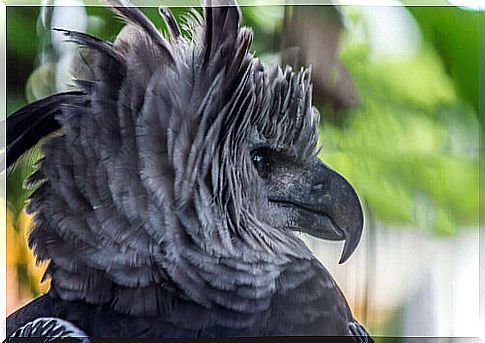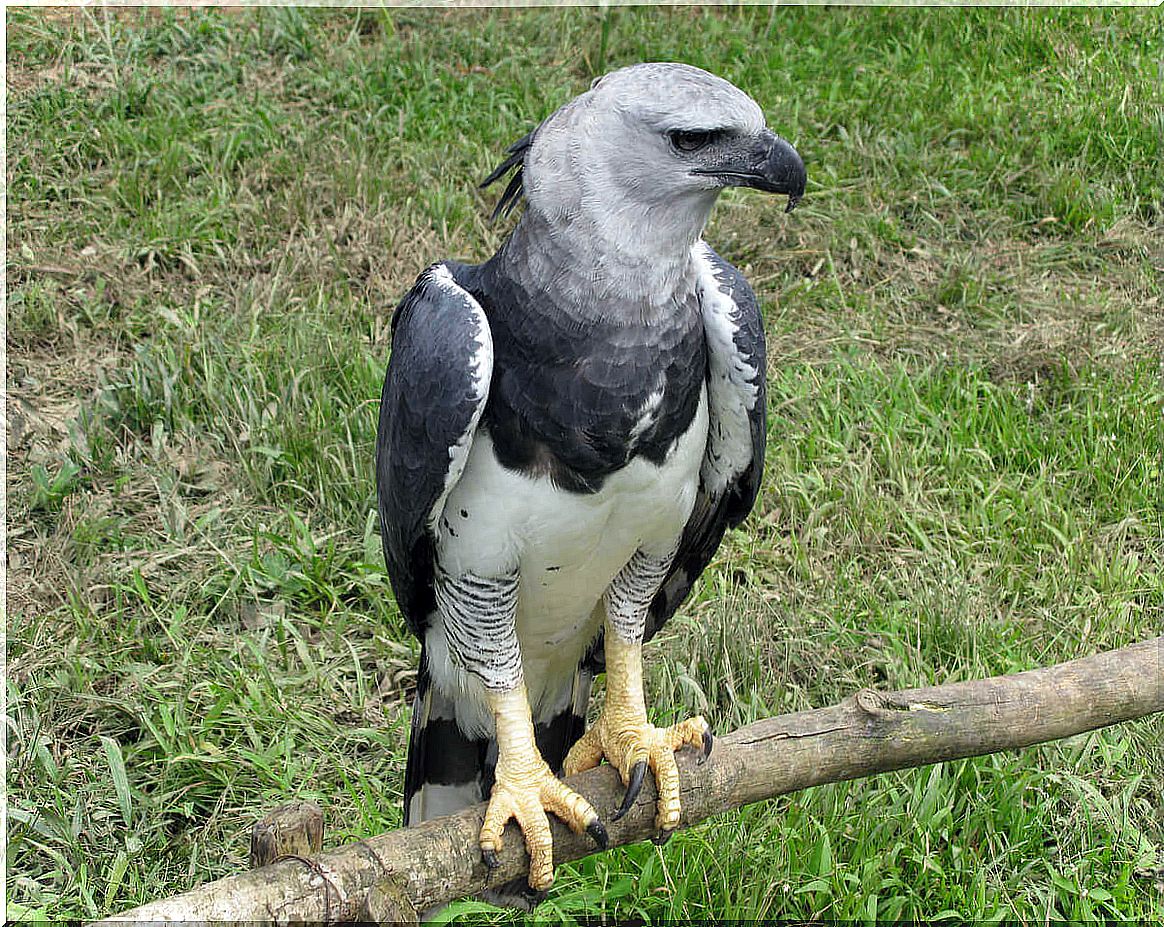Harpies, The Giant Birds Of Prey In South America

Harpies or American harpy eagles ( Harpia harpyja) are the largest and most powerful birds of prey that live in the Amazon forests. There are approximately 60 known species of eagles worldwide, only two of which live in the United States and Canada. Another nine live in Central and South America. The remaining species come from Africa and Eurasia.
It is interesting that the name of this giant bird of prey comes from the harpies of Greek mythology. They have been described as beautiful winged women; with a bird’s body on which was a woman’s head. They were the daughters of the ocean titan Thaumas and the oceanid Elektra. Harpies can usually live between 25 and 35 years of age.
Taxonomic classification of Harpyja
When it comes to the taxonomy of these birds, the picture can be confusing. However, the advent of molecular techniques has made the classification easier and clearer. There are currently three recognized genera – Harpia, Morphnus and Harpyopsis – each of which forms its own clade (monophyletic group).
Each of these three genera has only one species. In addition, Harpia harpyja and Morphnus guianensis live in the same geographic area and share some common physical characteristics. Therefore, they can easily be confused with one another during sightings.

Size and plumage are the most prominent characteristics of the harpies
Their body size varies between 89 and 110 centimeters, while the wingspan of adult females can reach up to 2 meters. In general, the male birds are smaller, weighing between 5 and 7.5 kilograms. The harpy females weigh between 7 and 9 kilograms.
In addition, another characteristic feature of harpies is that the cover plumage, shoulders, outer part of the wings and trunk in adult animals are black, slate or dark gray in color. In addition, their tail consists of long gray feathers with horizontal stripes. The chest, abdomen and flanks are white or light gray with black horizontal stripes.
The head and plumage of the legs are light gray, and there is a dark band around the neck. The broad, double-headed head of feathers located on the back of the harpie’s head is striking. He stands up when the birds feel threatened. In addition, some experts suggest that this crown could serve to perceive sounds, similar to the face disk in owls.
Features that make harpies (Harpia harpyja) easy to confuse with their relatives, the strangler eagles
First of all, you should know that harpies’ plumage will go through at least four color changes through adulthood. In fact, these birds do not have the full plumage of a full-grown bird until they are 4 to 5 years old.
First of all, the harpies have a completely white plumage. Then the back turns cream-gray and the wings get black spots. When the birds get a little older, they have 7 to 8 black stripes on their tails and a much richer crest than adult animals.
The young strangler’s eagle ( Morphnus guianensis ), on the other hand, is predominantly white and has darker wings. In addition, it differs from harpies ( Harpia harpyja) in that it is somewhat smaller and generally narrower. Because of this , young harpies can easily be mistaken for strangled eagles.
One way to distinguish the two species from each other is the fact that harpies have a longer crest. This is clearly divided into two parts and has a fork in the middle. It is also helpful to watch the birds in flight because only harpies have black and white stripes on their wings.
Harpies and their geographical distribution
Harpies live in tropical and subtropical forests, in the lowlands and on hills. In view of the constant human encroachment on these areas of Central and South America , this species has adapted to a certain extent to the fragmentation of its habitat.
As a result, the American harpy eagle can also survive in isolated primary forests, selectively deforested forests, and reforested forests if there are some large trees there. Usually it lives at altitudes up to 800 meters above sea level. However, specimens have also been sighted at an altitude of up to 2,000 meters.
This species lives in southern Mexico, southern Colombia, Venezuela, Bolivia, Brazil, northeast Argentina, and Paraguay. Although harpies used to be sedentary in western Colombia and Ecuador, they have been driven out of these regions.
Harpies are powerful birds of prey
These birds of prey have a varied diet. But various studies have shown that their favorite food on the tree is mammals like sloths. In addition, harpies hunt monkeys, agoutis, armadillos and deer. They also eat other birds, such as macaws and other species of parrots. Finally, reptiles are also on their menu, including large lizards and snakes.
There have been reports that this bird of prey can hunt prey that weighs more than its own. Like most hunters, the harpies help keep the populations of their prey under control. Hence , harpies play an important role in controlling mesopredators like capuchin monkeys.
Behavioral characteristics of the harpies
Harpies are highly territorial daytime hunters who need an area of at least 30 square kilometers to hunt. In addition, these birds enter into monogamous partnerships and reproduce only with that partner. Therefore, pairs with a small cub are often observed.
It is also interesting to know that these birds use certain sounds (vocalizations) to communicate with each other and during mating rituals. In addition, they often produce vocalizations when sitting on branches or poles. Experts assume that this is a territorial behavior. These birds are incredibly good fliers and they maneuver very skillfully in the dense vegetation of their wooded habitat.
Harpia harpyja and its conservation status
Hayrpies appear on the IUCN Red List as a type of warning list (Near Threatened) and their population is declining. In areas in which humans have already intervened very actively, this species is already extinct.

This is mainly due to the destruction of their habitat through logging and agriculture. In addition, dams (and the like) are being built for the timber industry and the forests are being reforested with exotic species. The trade and hunting of these birds also pose a further threat.
There are reports of harpies being hunted by farmers because they view these birds of prey as a threat to their livestock. Therefore, programs have already been put in place to educate farmers and hunters about these animals and to increase awareness and understanding of these great birds of prey.








